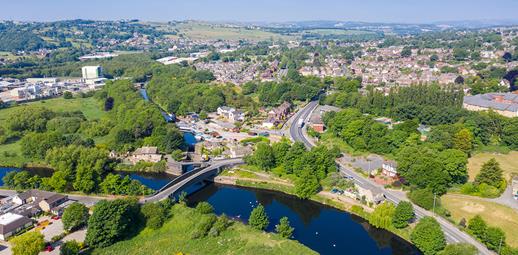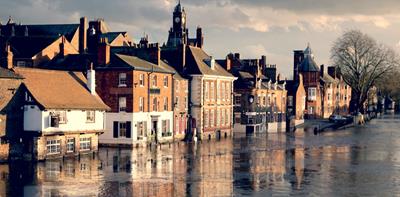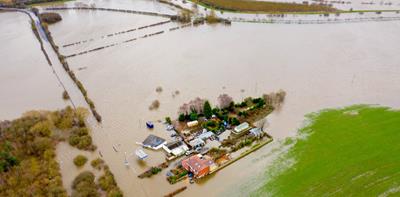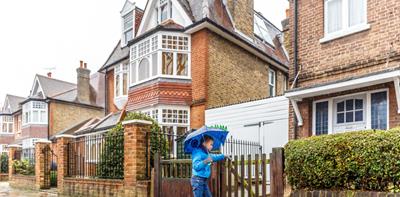
As the risk of flooding increases, it’s understandable to be worried about the potential damage to your home.
So how do you check if your home is at risk of flooding? And what steps can you take to protect both your house and your belongings?
EASY AS HACK
You can easily check whether your home is a potential flood risk by using the flood maps on the Gov.uk website.
At a glance
- Scientists warn that millions of houses are at risk of flooding in the UK
- From moving valuables to changing flooring, there are many ways you can reduce the risk of flood damage
- Here we share what you need to know about your home being at risk of flooding
Is my home at risk of flooding?
Flooding in the UK is becoming more frequent and affecting more people. Scientists have warned that millions of people are at risk of flooding in the UK, in both urban and rural areas [1].
The easiest way to check whether your home is a potential flood risk is by using the flood maps on the Gov.uk website. Simply enter your door number and postcode to get an up-to-date status. Or, if you’d like to know the flooding history for a property, contact the Environment Agency.
If you believe you might be at risk, it may also be worth signing up for flood alerts, which are sent by phone, email or text message. These are available in England, Wales and Scotland, and come directly from the Environment Agency.
What is Flood Re?
Flood Re is a re-insurance scheme – planned to be in place until 2039 – that makes flood cover more widely available and affordable as part of your home insurance[2] .
It was set up by the insurance sector along with the government to ensure that people who own properties in areas with a higher risk of flooding are still able to access affordable home insurance.
Essentially Flood Re takes over the risk of offering cover against flood damage from the individual insurers. This has not only meant that homeowners in affected areas have more choice when it comes to arranging insurance, but that cover is also cheaper.
Quick steps you can take to protect your home
In the event of a flood warning, the first priority is to ensure that you and your family are safe. If it is safe to do so ahead of time, there are also some simple things you can do to minimise flood damage to your home:
- Move valuables upstairs or to a higher place– this can help to keep them away from floodwater if it enters your home.
- Move your car– if it is safe to drive, consider moving your car out of the area.
- Cover any water entry points– use thick plastic sheeting to cover up any air vents where floodwater could enter your home. Specialist covers are also available.
How to efficiently prepare for flood warnings
For greater protection in the long run, there are permanent changes you can make to your property.
- Change flooring – lay tiles throughout your house instead of carpet. Elaine Toogood, Architectural Advisor to Modern Masonry Alliance, said: “Replace timber floors with concrete ones, as these are proven to be more resilient in a flooding scenario.”
- Move electricals – move electrical sockets up the wall and fit non-return valves. Similarly, it’s a smart move to place large appliances like electric cookers, fridges and washing machines onto raised plinths.
- Make radiators readily moveable – ensure radiators are readily removable so that you can swiftly take them out before a flood.
- Install flood sensors – Anthony Neary, managing director of security retailer Safe.co.uk says: “Flood sensors are also really useful if you’ve got other compatible wireless security alarm systems installed, as they can be integrated to the same alert system, sending a notification straight to your smart phone if water is detected in the vicinity of the sensor.”
What to do after a flood
If your house has been flooded, contact your insurance company and follow their advice.
If you had to leave your home, check with emergency services that it’s safe to return. Don’t forget that your home may need a safety inspection by the utility companies before you can turn the water, gas and electricity back on.
You can find out more about our home insurance here.
[1] https://www.redcross.org.uk/stories/disasters-and-emergencies/uk/what-are-floods
[2] https://www.floodre.co.uk/about-us/
Original article written in Sept 2021, updated 27.09.2023


